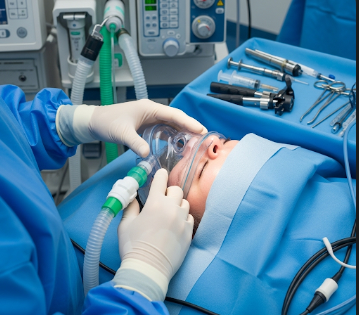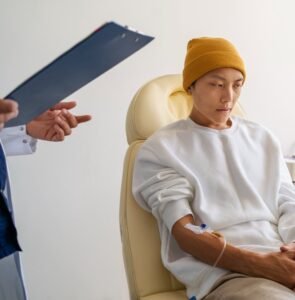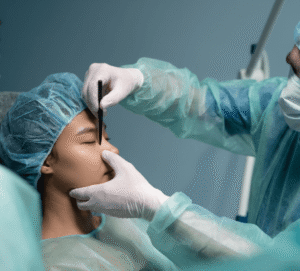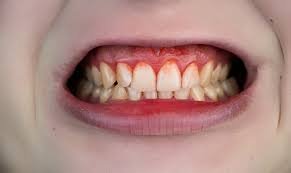What is General Anaesthetic?
General anaesthetic (GA) is a medication or combination of medications that induce a temporary state of unconsciousness, loss of sensation, and muscle relaxation, allowing patients to undergo surgery or medical procedures without pain or awareness.
💡 Key Points About General Anaesthetic:
✔️ Induces unconsciousness – Patients are fully unaware of surgery
✔️ Blocks pain sensation – Analgesic effect during procedures
✔️ Muscle relaxation – Facilitates surgical access
✔️ Controlled reversible state – Consciousness returns once the medication wears off
Forms of Administration:
➡️ Inhalational Anaesthesia – Gases or vapors (e.g., sevoflurane, desflurane) via mask or breathing tube
➡️ Intravenous Anaesthesia – Medications like propofol or etomidate given through a vein
➡️ Combination techniques – Often inhalational + intravenous for balanced anaesthesia
In Korea, general anaesthesia is administered by board-certified anaesthesiologists in fully equipped operating theaters, ensuring patient safety and optimal outcomes.
Why It’s Done
General anaesthetic is essential for major surgical and invasive procedures:
✔️ Major surgeries – Cardiac, abdominal, orthopedic, and neurosurgery
✔️ Painful procedures – Endoscopic interventions, biopsies, or reconstructive surgeries
✔️ Patient comfort – Prevents anxiety, movement, and distress during procedures
✔️ Airway management – Allows secure control of breathing during complex surgery
Clinical Benefits:
➡️ Pain-free procedure → No awareness or discomfort
➡️ Controlled environment → Surgeons can perform complex operations safely
➡️ Muscle relaxation → Reduces tissue injury and facilitates technical access
➡️ Rapid recovery → Modern anaesthetic agents allow faster emergence post-surgery
In Korea, general anaesthesia is used in hospitals ranging from small clinics for minor procedures to tertiary care centers for complex surgeries, with strict monitoring for safety.
Alternatives
Depending on the procedure and patient condition, alternatives include:
⭐ Local anaesthesia – Numbs a small area; patient remains awake
⭐ Regional anaesthesia – Blocks sensation in larger areas, e.g., spinal, epidural, or nerve block
⭐ Sedation / Conscious sedation – Patient remains relaxed or lightly asleep, may be combined with local anaesthesia
⭐ Non-pharmacological measures – Distraction, hypnosis, or relaxation techniques (limited to minor procedures)
👉 Key Point: General anaesthesia is preferred for major surgeries and procedures requiring unconsciousness, while alternatives may suffice for minor or localized interventions.
Preparation
Preparation is crucial for safety and effective anaesthesia:
🔹 Medical assessment – Review of medical history, allergies, prior anaesthetic reactions
🔹 Physical examination – Heart, lungs, airway, and general fitness
🔹 Blood tests and investigations – CBC, kidney/liver function, ECG, chest X-ray if indicated
🔹 Medication review – Adjustment or temporary discontinuation of anticoagulants, diabetes drugs, or other chronic medications
🔹 Fasting instructions – Typically 6–8 hours before surgery
🔹 Informed consent – Explanation of risks, benefits, and procedure plan
⭐ Arrange support post-procedure – Companion for transportation after recovery
⭐ Mental preparation – Education about sensations, monitoring, and recovery reduces anxiety
How It’s Done
Administration of general anaesthetic is performed by a skilled anaesthesiologist in a controlled environment:
- Induction
✔️ Intravenous or inhalational agents administered to induce unconsciousness
✔️ Airway secured via endotracheal tube or laryngeal mask - Maintenance
🔹 Continuous delivery of anaesthetic agents to keep patient unconscious
🔹 Monitoring vital signs – Heart rate, blood pressure, oxygen saturation, and end-tidal CO₂ - Emergence
➡️ Anaesthetic agents tapered off at procedure end
➡️ Patient gradually regains consciousness
➡️ Removal of airway devices once patient can breathe independently
Highlights:
✔️ Requires continuous monitoring of vital signs
✔️ Modern techniques allow precise dosing for rapid induction and recovery
✔️ Safety protocols minimize risk of complications
Recovery / Follow-up
Post-anaesthesia recovery is monitored in Post Anaesthesia Care Unit (PACU):
✔️ Immediate observation – Vital signs, oxygen saturation, and consciousness
✔️ Common effects – Drowsiness, nausea, sore throat, mild shivering or dizziness
✔️ Pain management – Analgesics as needed for surgical discomfort
✔️ Diet – Usually clear fluids first; regular diet resumed based on recovery
✔️ Discharge instructions – Activity restriction, hydration, medication guidance
⭐ Most patients fully recover within a few hours, while effects may linger for 24–48 hours depending on procedure and medications used.
Complications / Risks
General anaesthetic is very safe in modern practice, but potential risks include:
⚠️ Common side effects – Nausea, vomiting, sore throat, mild dizziness
⚠️ Allergic reactions – Rare, potentially serious
⚠️ Respiratory complications – Hypoxia, aspiration
⚠️ Cardiovascular events – Blood pressure fluctuations, arrhythmia
⚠️ Post-operative cognitive dysfunction – Especially in elderly
⚠️ Malignant hyperthermia – Extremely rare genetic reaction to certain anaesthetic agents
➡️ In Korea, anaesthesiologists follow strict protocols, advanced monitoring, and emergency readiness, making serious complications exceedingly rare.
Treatment Options / General Anaesthetic Services in Korea
Korean hospitals provide comprehensive anaesthetic care:
🏥 General Surgery – Laparoscopic, open, and robotic procedures
🏥 Orthopedic Surgery – Joint replacements, spinal surgeries
🏥 Neurosurgery – Brain and spinal operations
🏥 Cardiac Surgery – Open-heart procedures under GA
🏥 Paediatric Anaesthesia – Specially trained teams for children
🏥 Day Surgery / Outpatient Anaesthesia – Short procedures with rapid recovery
Why Korea is a Preferred Destination:
✔️ Experienced anaesthesiologists – Trained in both adult and pediatric care
✔️ State-of-the-art monitoring – Real-time tracking of heart, lungs, oxygenation
✔️ Advanced anaesthetic agents – Fast-acting, safe, and controllable
✔️ Integrated care – Seamless coordination with surgical teams
✔️ Patient safety protocols – Emergency readiness and strict standards
Approximate Costs in Korea:
🔹 General Anaesthesia for minor procedures → $150 – $500
🔹 For major surgery → $500 – $2,500 depending on duration and complexity
🔹 Paediatric anaesthesia → Slightly higher due to specialized care
🔹 Monitoring and recovery fees → $50 – $200
Conclusion
General anaesthetic is essential for safe, painless, and effective surgical care, allowing complex procedures to be performed without pain or awareness.
It helps patients:
✔️ Remain unconscious and pain-free during procedures
✔️ Enable surgeons to perform technically demanding operations
✔️ Minimize patient movement and risk during surgery
✔️ Achieve safe and rapid recovery with modern monitoring
In Korea, general anaesthesia provides:
✔️ Advanced techniques and monitoring for maximum safety
✔️ Expert anaesthesiologists skilled in all age groups and procedures
✔️ Comprehensive care from pre-op assessment to post-op recovery
✔️ Minimized risks and efficient recovery, improving overall surgical outcomes
👉 Key Message: General anaesthetic in Korea ensures safe, controlled, and effective unconsciousness, making modern surgery possible while maintaining patient comfort and safety.













